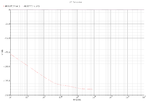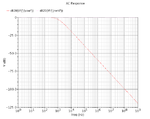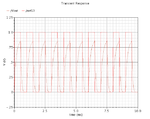mashnayn
Newbie level 4

Hi everyone i am designing a simple integrator using Switched capacitor, the clock frequency of which has been chosen as 100KHz and the Rsc=1K ohm and capacitor value of 15nF as shown in the circuit.The problem here is the bandwidth of the system has been reduced drastically though the output is being integrated properly, please suggest me the solution behind this problem. Actually in case of Switched capacitor integrator the bandwidth will be more than that in the case of ordinary RC-Integrator,but i am getting reverse effect.
Attachments
Last edited:









